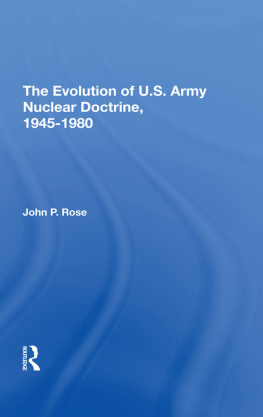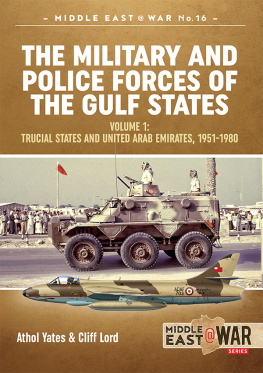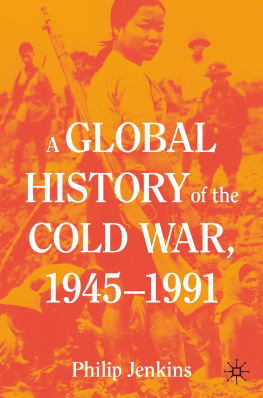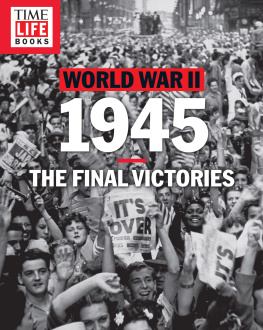Her Cold War
Her Cold War
Women in the U.S. Military, 19451980
TANYA L. ROTH
The University of North Carolina Press Chapel Hill
This book was published with the assistance of the Greensboro Womens Fund of the University of North Carolina Press.
Founding Contributors: Linda Arnold Carlisle, Sally Schindel Cone, Anne Faircloth, Bonnie McElveen Hunter, Linda Bullard Jennings, Janice J. Kerley (in honor of Margaret Supplee Smith), Nancy Rouzer May, and Betty Hughes Nichols.
2021 Tanya L. Roth
All rights reserved
Set in Charis by Westchester Publishing Services
Manufactured in the United States of America
The University of North Carolina Press has been a member of the Green Press Initiative since 2003.
Library of Congress Cataloging-in-Publication Data
Names: Roth, Tanya L., author.
Title: Her cold war : women in the U.S. military, 19451980 / Tanya L. Roth.
Other titles: Women in the U.S. military, 19451980
Description: Chapel Hill : University of North Carolina Press, [2021] | Includes bibliographical references and index.
Identifiers: LCCN 2020056874 | ISBN 9781469664422 (cloth ; alk. paper) | ISBN 9781469664439 (paperback ; alk. paper) | ISBN 9781469664446 (ebook)
Subjects: LCSH: Women soldiersUnited StatesHistory20th century. | Sex roleUnited StatesHistory20th century. | Sex discrimination against womenUnited States.
Classification: LCC UB418.W65 R68 2021 | DDC 355.0082/0973dc23 LC record available at https://lccn.loc.gov/2020056874
Cover illustration: Cover page of Women Marines (NAID 26323300). Department of Defense, Department of the Navy, U.S. Marine Corps, Division of Information; Records Relating to the Commemoration of the Year of the Women Marines, and to Subsequent Women Marine Activities, 1/19684/1972; Records of the U.S. Marine Corps, 1775, Record Group 127; National Archives at College Park, College Park, MD.
Excerpt from What Makes a Wave? (written by Ralph Blane, music by Harry Warren) from Skirts Ahoy! (directed by Sidney Lanfield [Beverly Hills, California: MGM Studios, 1952]) is used by permission of Four Jays Music.
For women in uniformpast, present, and future
Contents
Illustrations
Colonel Mary Hallaren portrait,
Proud Parents recruiting poster,
Mother Dad and Grandma, in Somebody Special pamphlet,
A Brand-new Beauty, in Somebody Special pamphlet,
Great myths about The Womens Army Corps,
Navy recruit training,
Waves sewing badges,
Serving You in Air Force Blue! recruiting ad,
Food service, machine accounting, and information, in Somebody Special pamphlet,
Brigadier General Mildred Bailey,
General Elizabeth Hoisington portrait,
Major General Jeanne Holm portrait,
Acknowledgments
Books begin with questions. This book began with one question two decades ago in an undergraduate seminar, grew into an honors thesis with new questions, and those questions led me to my PhD ten years later. Being able to ask these questions, explore them, and find new ones has been one of the greatest privileges of my adult life. Its been an even greater privilege to be surrounded by people along the way who have indulged me as I asked questions, pushed me to rethink my questions, challenged me to go further than I might ever have imagined, and helped me find answersoften, answers I didnt know I needed.
As an undergraduate at the University of MissouriColumbia, Linda Reeder and the late Mary Neth introduced me to womens history and changed my life. Im grateful to both of them, and for Professor Reeder introducing me to the study of gender and war. Thank you for assigning Vera Brittains Testament of Youth, which became the foundation for everything since, and thank you for all the time you invested in me and my work.
At Washington University in St. Louis, I got to learn from and study with people who opened my world further. I cannot express just how fundamentally my graduate experience shaped both my writing and my professional career as a teacher. In my final year of graduate school, a generous American Fellowship from the American Association of University Women allowed me to devote my time to writing and polishing off my research. I would never have been able to apply for that fellowship without the support of the Department of History faculty, and all the things I learned in my time there. First and foremost, I thank Andrea Friedman, my advisor. Your voice echoed in my head every step of the way in writing this book. Even when I wasnt sure if my writing was making sense, you always had a way of seeing what I was after and helping me figure out how to say it better. Thank you for putting up with me and for all you have taught me. Two others shaped this project and my writing in significant ways, too. First, the relative scarcity of semicolons in this manuscript is because of Peter Kastor: thank you for your advice and mentorship over the years. Tim Parsons, years ago you challenged me to meet veterans and hear their stories. I didnt think I could be an oral historian and the idea scared me to death, but I didnt want to let you down. Also, you have always insisted on one crucial questionso what?and while that could be infuriating, you were also right that it is the question to ask. Now I make my own students ask that question.
Research is an adventure, and while researching what became this book, I got to have so many adventures across the country. Some days, I felt giddy with the prospect of uncovering fascinating documents; others were full of long drives and D.C. Beltway traffic, but doing research in archives is like nothing else. Ill never forget hiking the University of TexasAustin campus with my friend Seth Offenbach as we both pursued our research at the towering Lyndon B. Johnson Presidential Library. In Abilene, Kansas, before and after long hours bent over old papers, I discovered chocolate tea at a bed and breakfast where President Eisenhower played as a child and saw my first (and to date, only) combine tractor derby. While researching at the Kennedy Presidential Library, I trekked in the falling snow on the waterside path from my hotel to the library. Thanks to a few days at the National Archives in D.C., I will always get to say that Ive done research in the same building that houses the Declaration of Independence, and whats cooler than that? Im grateful to the John F. Kennedy, Lyndon B. Johnson, and Gerald Ford presidential libraries, who helped fund research adventures that led to important information for this book. I hope I contained my squeals of glee in your reading rooms and didnt disturb the other researchers too much when I discovered particularly interesting items. Staff at these libraries, as well as the Dwight Eisenhower and Harry Truman presidential libraries, all graciously helped me refine queries and sift through materials to find obscure information on womens military service. Staff at the National Archives in College Park and Washington, D.C., the U.S. Army Womens Museum, the Navy Historical Centers Operational Archives, the Marine Corps Archives, the Air Force Historical Research Agency, Schlesinger Library, the Library of Congress, and the Smithsonian were indispensable in helping me navigate their systems and find what I needed. In particular, though, I am grateful for Britta Granrud at the Women in Military Service for America Memorial in Arlington, Virginia, and Beth Ann Koelsch at the Betty H. Carter Women Veterans Historical Project at the University of North CarolinaGreensboro. These collections are remarkable and are a must for anyone who wants to know more about womens military service. Thank you to the Womens Memorial, the Smithsonian, and Four Jays Music Company for permission to use materials in this book.








